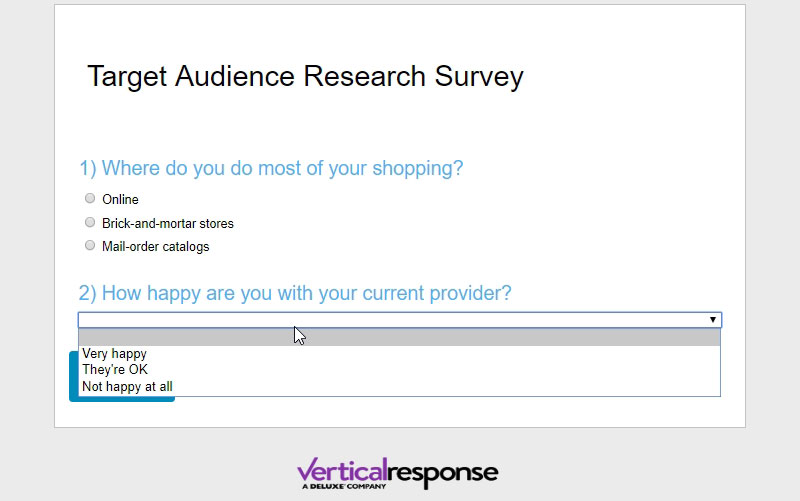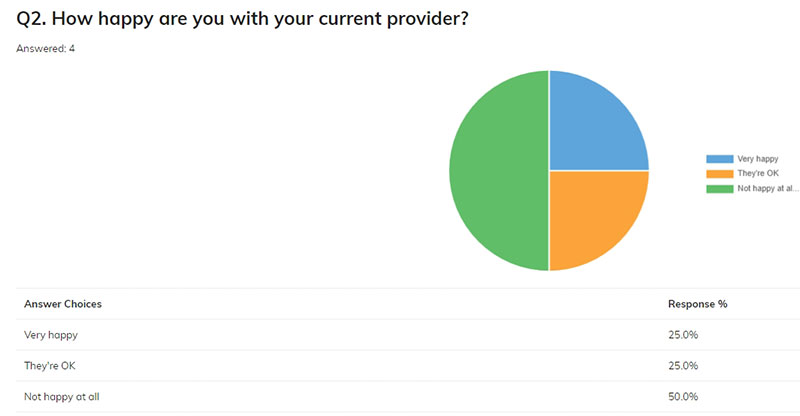
How to Use Surveys to Research Your Target Audience
A well-designed survey can reveal what your customers want, what motivates them to buy, and how to carve out a competitive advantage in the marketplace — a critical step for startups and small businesses planning to launch new products and services. The following details which you should send surveys to, which survey questions to ask and how many surveys you should send to effectively research your target audience — and position your business for success.
How to locate your target audience:
When gathering knowledge, it’s easy to assume that more is better. The truth is that gathering a tonne of data about your responders is not a successful tactic. It is crucial to have accurate data. You may divide survey replies into two categories based on the kind, topic, and particulars of your survey:
- General data such as education level, age, income, marital status, or political/religious beliefs.
- Precise details include a person’s preference for a certain brand, happiness with a particular service, etc.
Your goal is to be certain of what information, or premium content, you want to learn from your responders. We often tend to ask questions that are pointless for our study and irritating to the interviewee. You will get more responses if you are clear and concise about the survey’s subject. The clarity in question-wording reduces the possibility of misunderstanding, misinterpretation, and ambiguity, which is a key marketing tactic.
By asking the correct questions, you may collect information about your responses that improves your chances of converting and keeping them in the future, in addition to emails for the next promotions. After reading this article, you’ll understand how to efficiently survey your target market and utilize the information you get to create content, build your brand, and eventually expand your company.
Who to send surveys to
Start with a basic understanding of your audience demographics, then send surveys accordingly. For example, a B2B software company might know it wants to target real estate agencies with at least ten agents and $5 million in revenue. Or, a lawn care service might know it wants to target parents with household incomes greater than $250,000.
If you’re targeting the general population, it’s OK to send surveys to friends, family, and colleagues; but the better you target your surveys, the more usable insights you will glean. If you need help, try these tools for researching your target audience.
Survey questions to ask
The best survey questions are designed to yield responses you can use to fine-tune your marketing.
Demographic questions
The answers to these questions will help you create targeted marketing campaigns that reach your customer base.
If you target consumers, examples include:
- Age
- Gender
- Income
- Marital status
- Parental status
- Education level
- Own/rent a home
- Ethnicity
If you target businesses, examples include:
- Industry
- Annual revenue
- Annual marketing budget
- Number of employees
- Number of customers
Behavioral questions
The answers to these questions will help you understand your audience’s values, motivations and behaviors. That information will in turn help you develop your unique selling proposition so that you can compete in the marketplace. Examples include:
- Who makes purchasing decisions?
- Which competitor products do they use?
- Where do they buy them? Online, offline, from catalogs, etc.?
- How often do they use a given product?
- How often do they buy a given product?
- Which competing brands do they buy from or recognize?
- How do they research products and services before buying? (reviews, social media, online articles, search engines, etc.)
- What are their biggest challenges?
- What are their goals?
- What features and benefits do they value in a product? (price, quality, convenience, etc.)
- What is their level of happiness with their current source? What would they change about them?

Survey question design
Designing your survey questions to elicit accurate and measurable responses is important. Multiple choice, drop-downs, matrix ratings, and star ratings make it easy to understand the results of your survey at-a-glance without the need to tediously sift through responses.
Text fields can be used for questions that require custom responses, though you should limit your survey to just a few of these to simplify analysis. Images can help customers understand your questions or provide visual comparisons; for example, if you want to know which logo they prefer.
Survey questions can be required or optional; however, the most important questions should be required so you can glean the insight you need.
More advanced surveys can employ skip logic, which alters questions based on previous answers. This can funnel different customer segments to the most pertinent questions.
An online survey creator makes it easy to create different question types and deploy your survey in a mobile-friendly format that works on all devices. Some survey tools, like VerticalResponse, instantly analyze your results so you can act on insights right away.

How many surveys to send
You need to send enough surveys to generate a sample size that accurately represents your target audience, or population, with a minimal margin of error.
In the survey world, two terms are used to describe the validity of surveys: confidence interval, which is the margin of error, and confidence level, which is how certain you are that the results are accurate. You should generally strive for a five percent or less margin of error and a 95 percent confidence level.
There are complicated equations that can project the confidence interval and confidence level of a given survey based on population size and the number of surveys sent. Still, you don’t need to reference those to send a successful survey.
Instead, use the following steps to determine how many surveys to send.
1. Estimate population size
Determine how many people are in your target audience.
2. Determine how many responses you need
The number of responses you receive is your sample size. For small audiences, you want to survey as many people as you can; for larger audiences, ten percent is a good representation, but only up to a few hundred responses. You don’t want to waste time and resources collecting survey responses you don’t need.
To simplify things, use the following guidelines to determine how many responses you need according to the size of your audience, adjusted to yield a five percent margin of error.
- 200 audience members: 132 responses
- 500 audience members: 217 responses
- 1,000 audience members: 278 responses
- 2,500 audience members: 333 responses
- 5,000 audience members: 357 responses
- More than 5,000 audience members: 384 responses
3. Determine how many surveys to send
Average survey response rates are 10 to 15 percent, though some surveys can yield 20 to 30 percent response rates. To be safe, estimate a 10 percent response rate.
Since you know how many responses you need, you can divide that number by .10 to get the number of surveys you should send. For example, if you need 357 responses, you should send 3,570 surveys.
That works for larger audiences, but what about smaller audiences? If your audience size is 1,000, you need 278 responses to yield a five percent margin of error, but the math doesn’t work out because you’d need to send 2,780 surveys to achieve that. That’s more than the number in your audience! In this case, you can opt for a ten percent sample size. Your margin of error will be closer to ten percent, but if most of the responses are similar, that won’t matter. You can factor the margin of error into your results.
For example, if 70 percent of respondents say they like blue and 30 percent say they like pink, a ten percent margin of error would mean that 60 to 80 percent like blue and 20 to 40 percent like pink. In either case, you’ll still know blue is the preferred color, and your survey will still be valid.
Armed with these tips, you can develop winning surveys that yield actionable results that grant your business a competitive advantage.
Advantages of Excellent User Surveys
Correctly identify improvement needs.
You should congratulate yourself if the consumer had a positive experience and appreciates the goods or services you provided. If the consumer feels there is space for improvement, they will probably let you know. Even if you disagree with them, you should avoid giving them the impression that your dealings were unpleasant. Even if the consumer is mistaken, their negative perception is genuine, negatively impacting future purchases. You have the option to demonstrate to them that you want to become better by conducting a survey.
Cost surveys are reasonably priced. The cost per responder is quite low, particularly for online and mobile surveys. The cost per answer is often far lower than the cost of delivering a paper survey or a phone poll. The number of possible replies might reach thousands even if incentives are provided to responders.
User-friendly for participants
Most Internet users prefer to do surveys online rather than over the phone. With an online survey, participants may complete it whenever is most convenient for them, taking significantly less time.
Enhance the client experience
It might be challenging to identify UX flaws, such as when a consumer has a negative experience that you did not predict or when they have expectations that you did not anticipate. Both negative reviews and customer satisfaction surveys are used to get this data. Unquestionably, the latter is superior to the former.
However, anything your consumers give you is generally reliable information. You could even be able to surprise them with a pleasant encounter. Make the most of this chance to customize the customer’s experience.
Very simple to use
Several online tools make creating a survey relatively simple compared to the complex statistical and organizational challenges required to execute A/B testing. You can create and load a feedback survey in minutes and then send it to your consumers for feedback.
Question types for surveys:
If you want to maximize the performance of your consumer survey and the value you can get from it, there are several best practice measures you need to put in place, regardless of whether it’s more general or more specialized.
The most effective survey questions provide data you can utilize to improve your marketing. The following are the best practice steps you should think about:
Pose qualifying inquiries
Within your survey sample, there may be some respondents whose responses don’t reveal anything about your target audience. You should include qualifying questions in the survey to ensure the data you get is as relevant as feasible.
You may choose which survey data you can preserve and which you should delete using qualifying or screener questions. You may refrain from utilizing participants who prefer digital media since they are considerably less likely to be interested in vinyl records for your research.
Placing qualifying questions close to the start of a survey is a smart technique. Since the participant may complete the survey sooner by skipping the qualifying questions, starting with them is kind of them. You can sometimes design surveys such that certain responses to qualifying questions enable the participant to jump through to the pertinent questions, even if only a handful of them relate to them.
Behavioral inquiries
You may better understand your audience’s values, motives, and behaviors by finding the answers to these questions. You may then use that knowledge to create your unique selling proposition and compete in the market.
Examples include:
- Who makes choices about purchases?
- What items from rival companies do they use?
- What do they purchase? From catalogs, online or offline, etc.?
- When do they utilize a certain product?
- How frequently do they purchase a certain item?
- Which rival companies do they patronize or are familiar with?
- How do people do pre-purchase research on goods and services? (Search engines, social media, online publications, etc.)
- What are the major problems they face?
- What are they aiming for?
- What qualities and advantages do they look for in a product? (Cost, quality, ease of use, etc.)
- How satisfied are they with their present source? What aspects about them would they alter?
Asking about demographics
Comparing demographic and behavioral data may uncover fascinating trends in certain populations, even though they may first seem unrelated. You may identify trends based on a consumer’s life characteristics by asking these questions. You may identify the audience to target for your marketing campaigns and choose the most effective methods to engage with them using demographic trends.
The following are some of the ideal demographic inquiries to include in a survey:
- What gender are you?
- What age are you?
- Where do you call home?
- What is the greatest level of schooling you’ve attained?
- How are things in your marriage?
- What is your household’s yearly income?
- What kind of work do you do?
- Which of the following best characterizes your ethnicity?
If you want to concentrate your research on firms, pose inquiries like these:
- What field of job do you have?
- What is the yearly income of your company?
- What is the yearly budget for marketing?
- How many people work for you?
- What number of clients do you have?
Compared to many other techniques, the responses to these survey questions will make it easier to identify your target audience, allowing you to start pivoting to win their business.
Design of survey questions
Designing your survey questions to get precise and quantifiable replies is crucial. Without having to go through replies diligently, multiple choice, drop-downs, matrix ratings, and star ratings, make it simple to grasp your survey findings at a glance.
Text fields are used for questions that need unique answers, but you should keep the number of them in your survey to a minimum to make analysis easier. Images may be used to explain concepts to clients or to make visual comparisons, such as when you want to find out which logo they prefer.
The most crucial survey questions are necessary to get the necessary information. Survey questions might be mandatory or optional. Skip logic, which changes questions depending on prior responses, may be used in more sophisticated surveys.
Constructing several questions and publishing your survey in a mobile-friendly version compatible with all devices using an online survey builder is simple. Some survey platforms, like VerticalResponse, evaluate your data immediately so you can take action on the findings.
How to determine the survey’s intended audience
If you were preparing to launch a website that offered online tutorials through membership, one of your likely inquiries would be:
- Is there any demand or need for my courses?
- Who is likely to purchase my courses?
- How much are they prepared to spend?
First, run an online advertisement or send emails or messages to a representative sample to acquire a basic notion of your survey’s target audience. Then, using the findings of your target feedback survey, create a new questionnaire and a marketing plan.
Any online survey instrument must provide the following demographics:
- Gender
- age group
- Type of survey-taking equipment
- Census area for each survey respondent
You can include any extra demographic or behavioral questions that best support and fit your survey target’s specific specialty. Such include family size, experience with the subject matter, a desire to learn more, etc.
Apply various filters to the general survey findings after you have them all to determine which demographics would make the greatest survey subjects for your instructional website. From this point on, you will clearly understand the target audience size of the more general public and how to appeal to them to draw attention to your most recent business idea.
Conclusion:
In summary, surveys are fantastic tools businesses can utilize to get critical feedback, analytical data, and views, raise brand awareness, and create leads.
A survey is one of the finest things to attempt if your company suffers from a weak email list since it’s simple to set up and reasonably priced. Surveys may help you communicate with your target audience more effectively, provide more relevant and useful content, and instantly turn users into devoted customers.
Join 140,000 small business owners
© 2019, Brian Morris. All rights reserved.
 SUBSCRIBE
SUBSCRIBE 


